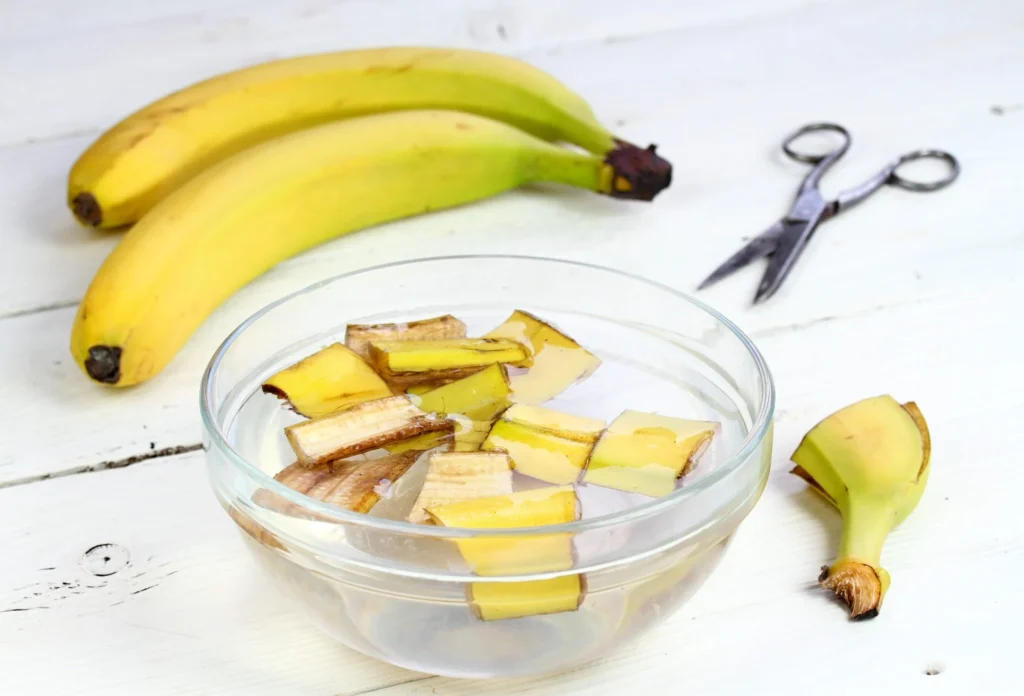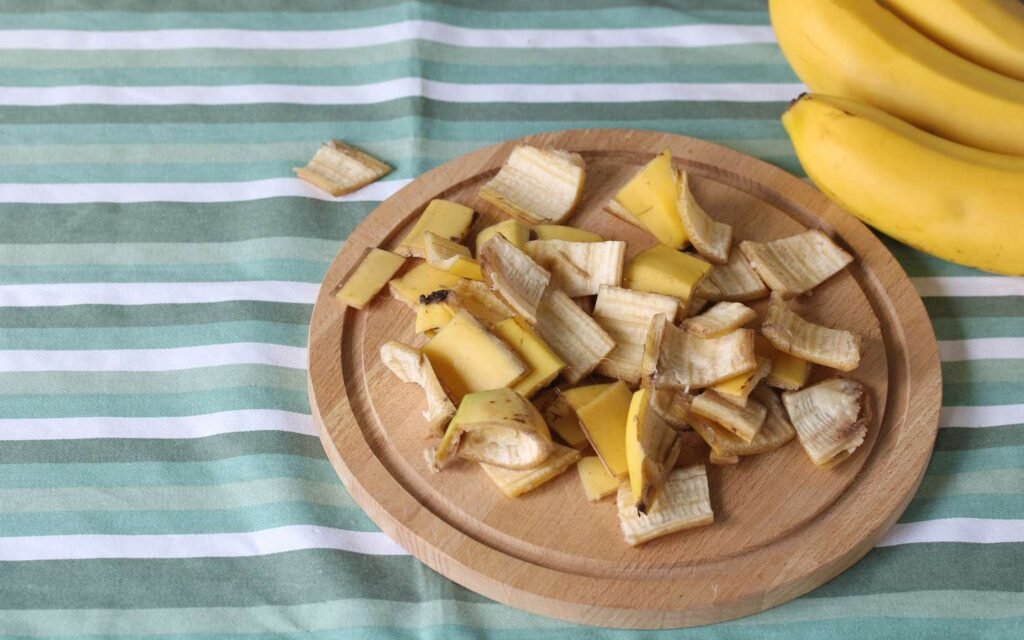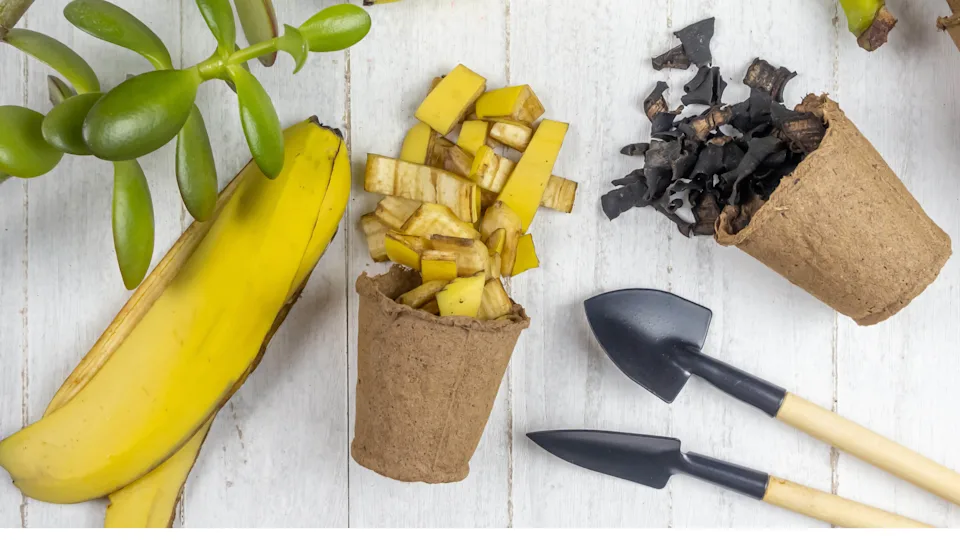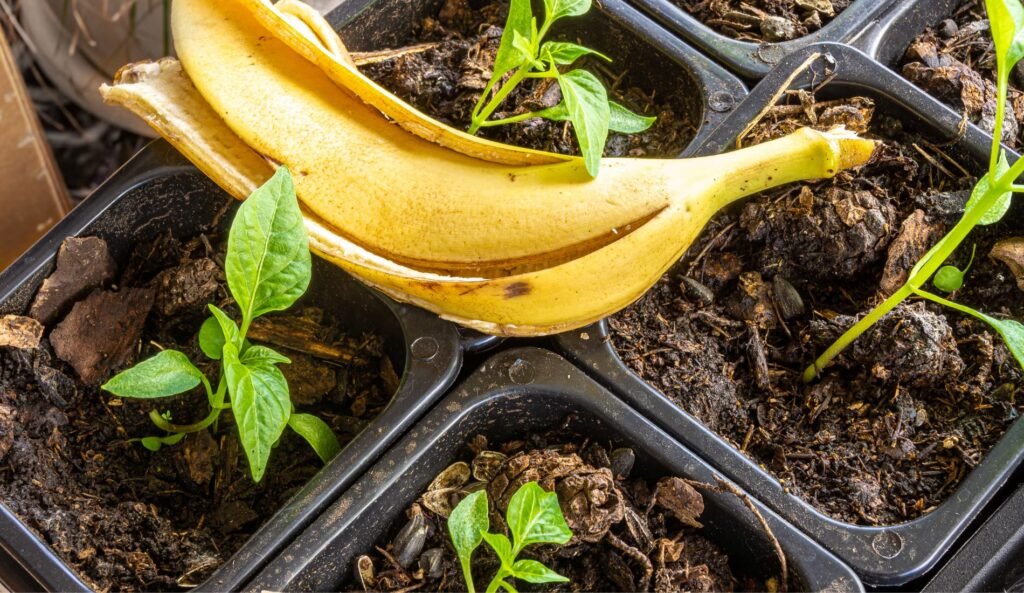Bananas are not only a delicious and nutritious snack but also a surprisingly valuable resource for gardeners. While most people discard banana peels as waste, they are packed with essential nutrients like potassium, phosphorus, calcium, and magnesium that plants love. These nutrients support strong root development, vibrant blooms, and healthy foliage. By repurposing banana peels, you can reduce kitchen waste, enrich your garden naturally, and promote sustainable gardening practices. In this guide, we explore five expert-approved ways to use banana peels in your garden for healthier, more productive plants.
Understanding the Nutritional Benefits of Banana Peels

Before diving into practical applications, it’s important to understand why banana peels are beneficial for plants:
- Potassium: Strengthens roots, improves flowering, and enhances disease resistance.
- Phosphorus: Encourages root and flower development.
- Calcium: Supports cell wall structure and prevents blossom end rot in vegetables like tomatoes.
- Magnesium: Essential for photosynthesis and overall plant health.
- Organic Matter: Improves soil structure and water retention when decomposed.
These nutrients make banana peels an inexpensive and eco-friendly fertilizer alternative, providing an all-natural boost to your garden.
1. Direct Soil Enrichment

The simplest way to use banana peels is to directly enrich the soil around your plants.
How to Apply
- Chop or Cut Peels: Cut banana peels into small pieces to speed up decomposition.
- Bury in Soil: Place chopped peels 2–4 inches beneath the soil surface near the base of plants.
- Water Regularly: Moisture helps break down the peels, releasing nutrients into the soil.
- Best Plants: Fruit-bearing plants like tomatoes, peppers, and roses respond particularly well to banana peel enrichment.
Expert Tips
- Avoid leaving large peels on the surface as they can attract pests.
- Use this method during planting or as a top-dressing around established plants.
Direct soil enrichment provides a slow-release fertilizer effect, improving plant vigor and supporting sustainable growth.
2. Homemade Banana Peel Fertilizer Tea

Banana peel tea is a liquid fertilizer that delivers nutrients directly to the plant roots, making it highly effective for both indoor and outdoor gardens.
How to Make Banana Peel Tea
- Prepare Peels: Chop 2–3 banana peels into small pieces.
- Boil Water: Place peels in 4–5 cups of water and boil for 10 minutes.
- Cool and Strain: Allow the mixture to cool, then strain to remove solid pieces.
- Apply: Pour the liquid around the base of plants as a nutrient-rich root booster.
- Frequency: Apply once every 2–3 weeks for optimal results.
Expert Tips
- Use banana peel tea for potted plants, vegetable gardens, and flowering plants.
- Avoid overwatering when applying tea to prevent root rot.
This method allows plants to absorb nutrients quickly and improves overall soil fertility without chemical fertilizers.
3. Banana Peel Mulch
Mulching with banana peels is a creative way to recycle waste while promoting soil health.
How to Use
- Chop Peels: Slice banana peels into small pieces or mash them slightly.
- Layer Around Plants: Spread peels evenly around the base of plants as a thin mulch layer.
- Cover with Soil or Compost: Lightly cover the peels to speed decomposition and prevent fruit flies.
- Replenish: Replace mulch every few weeks as it decomposes.
Benefits
- Improves soil moisture retention.
- Adds nutrients gradually as peels break down.
- Reduces weeds and protects roots from extreme temperatures.
Banana peel mulch is especially effective for tomato plants, peppers, and flowering shrubs, providing both nutrition and protection.
4. Composting Banana Peels

Composting banana peels is one of the most efficient ways to recycle them while creating nutrient-rich humus for your garden.
How to Compost
- Cut Into Pieces: Chop banana peels into small pieces to speed decomposition.
- Mix with Compostable Materials: Combine peels with brown materials like dried leaves, paper, or straw.
- Maintain Balance: Keep the compost pile balanced with roughly equal green (nitrogen-rich) and brown (carbon-rich) materials.
- Turn Regularly: Aerate the pile every few days to accelerate decomposition.
- Harvest Compost: In 6–8 weeks, the banana peels will have turned into dark, crumbly compost ready for soil enrichment.
Expert Tips
- Avoid composting large amounts of peels alone, as they can become slimy and attract pests.
- Mix with other kitchen scraps for a balanced compost rich in nutrients.
Composting transforms banana peels into humus that improves soil texture, water retention, and plant health naturally.
5. Natural Pest Deterrent and Soil Enhancer

Banana peels can serve a dual purpose by deterring certain pests and enhancing soil quality at the same time.
How to Use as Pest Deterrent
- Slugs and Aphids: Place small pieces of banana peel just below the soil surface around plants prone to slug or aphid damage.
- Calcium and Potassium Boost: As peels decompose, the nutrients help plants strengthen their natural defenses.
- Plant Health: Stronger, well-nourished plants are less susceptible to common pests and diseases.
Expert Insights
- This method works best for garden beds and outdoor containers.
- Combined with other organic pest control methods, banana peels help reduce reliance on chemical pesticides.
Banana peels not only nourish plants but also contribute to a healthier, more resilient garden ecosystem.
Additional Tips for Using Banana Peels in the Garden
- Avoid Overuse: While nutrient-rich, too many peels can imbalance soil chemistry. Use in moderation.
- Blend with Other Organic Materials: Pair banana peels with coffee grounds, eggshells, or compost for a well-rounded nutrient boost.
- Timing Matters: Incorporate banana peels during planting or early growth stages for maximum benefit.
- Indoor vs. Outdoor Use: Banana peel tea and compost are suitable for both indoor and outdoor plants, while direct soil burial and mulch are better for outdoor gardens.
- Prevent Attraction of Pests: Always bury or cover peels to avoid attracting unwanted wildlife.
By integrating banana peels thoughtfully, gardeners can promote sustainable, low-cost, and effective plant nutrition.
Conclusion
Banana peels are more than kitchen waste—they are a natural, nutrient-rich resource that can significantly enhance your garden. From direct soil enrichment and banana peel tea to mulching, composting, and pest deterrent methods, these five expert-approved strategies demonstrate the versatility and power of banana peels in gardening. By adopting these methods, gardeners can boost plant health, increase yields, and reduce reliance on chemical fertilizers, all while practicing sustainable waste management.
Whether you are an indoor gardener, a balcony enthusiast, or tending a backyard vegetable patch, incorporating banana peels into your garden routine is a simple yet highly effective way to promote strong, healthy, and productive plants. With these techniques, you can transform what was once discarded into a powerful tool for growth, nourishment, and sustainability in your garden.
